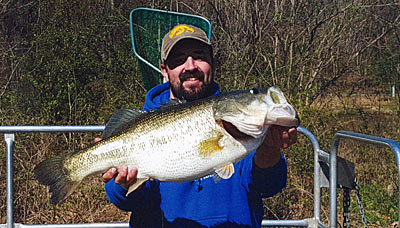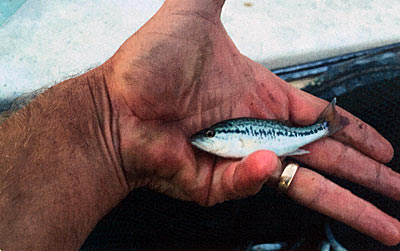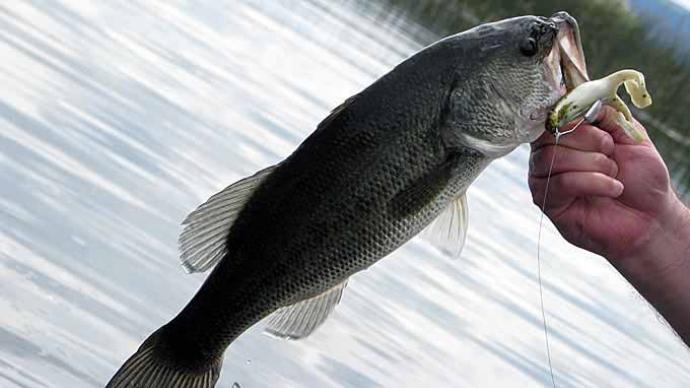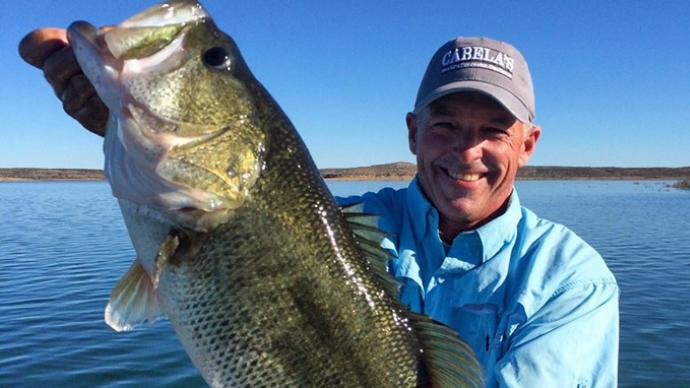
Many, if not most, pond Managers value bigger and heavier fish over numerous juvenile bass. But, it is important to understand how size affects bass behavior, the quality of the bass caught, and even how size relates to fisheries management.
Natural mortality is key. While large, old bass may have a slightly greater natural mortality rate than younger adult bass, overall mortality rate of juvenile fish is much, much greater. Bass spawn between 5,000 and 12,000 eggs per nest, on average. Big bass lay more eggs. Of these substantial numbers, only two need to survive to adulthood to maintain the adult population— if each pair of bass spawned only once yearly. Only one must survive per nest if adults spawn twice, and adult bass can spawn three times in a year. Typically, egg, fry, and juvenile mortality is huge: more than 99.98 percent. Size of the spawn is seldom the main factor determining the size of adult bass populations. Almost always the number of bass in the adult population (carrying capacity) is determined by suitable habitat, ample nutrients, availability of prey of suitable sizes, favorable water temperatures, and season length and stability.
The size of bass determines how they feed and how vulnerable they are to predators. Born with an instinct to eat anything moving that's small enough to fit inside their mouths, tiny fry are relatively immobile, are easily caught and eaten by predators, feed only on food immediately in front of them, and are basically limited to small plankton and tiny insects. Feeding success depends largely upon the density of planktonic food in the nesting area.

As fry grow to fingerlings, mobility and mouth size increases. Diet expands to include larger plankton, like Daphnia, small insect larvae, and even smaller bass and other fish. Food density in the spawning area becomes less critical to continued survival. Fingerlings move to find more food. This behavior spreads the future adult bass population away from spawning areas to find other suitable habitats. Gradually, the fingerlings move to occupy main points, creek beds, and even deeper water structures that offer sufficient food. But, as they grow, their numbers dwindle fast. Baby bass are like Tootsie-Roll pops at a day care. Gone.
As fingerlings grow, they remain highly vulnerable to predators, but the type of predation tends to change. Larva, fry, and small fingerlings are heavily preyed-upon by insect predators, sunfishes, and slightly-larger juvenile bass. By the time they reach 2-3 inches in length, predation by birds like herons and larger bass increases.
As fry, schooling behavior is critical, primarily as a defensive technique because individual fish are easier targets for most predators. A downside of this tactic is that there is often less food per individual in schools. In tight schools, only the leading edge of the school tends to get much food. As small fish spread-out, they individually tend to get more plankton. While schooling as fry, tiny bass often first experience open-water feeding as they follow plankton concentrations into open water.
Open water feeding by fry leads fingerling bass to suspend and feed on smaller fish in open water. If there is no significant predatory threat in the pelagic zone, juvenile bass quickly learn to move offshore and feed on smaller juvenile fish. But, abundant larger, open-water predators often make this experience too hazardous, limiting suitable habitat to shoreline cover, coves, or thick cover on structures near shallow water.

Fingerling mortality rate is high, 50 percent or more per month, but less than that of fry. As they grow larger, bass become increasingly adept at escaping predators. Most of an original school of 500-1000 fry has been reduced to an aggregation of 50-100 fingerlings. At this point, there are still a lot more small bass than the required average of one or two survivors per nest.
As fingerlings, bass continue to get some defensive benefit from schooling, but feeding in smaller groups, or aggregations, offers more food to individuals. Fingerlings learn to feed aggressively, to chase down fleeing targets, and to cooperate and graduate. Flushing becomes their primary hunting tactic. As numbers are reduced, larger fingerlings continue to move as a group, but not in coordination like a true school. Any prey one bass startles are more easily caught when they flee into the strike windows of adjacent bass.
Teenage 6- to 11-inch bass continue to feed using the flushing technique. They maintain juvenile tendencies to feed constantly and are active and catchable by anglers throughout daylight hours. They have not yet learned to conserve energy for times when feeding is optimal, although conditioning this need may already be underway. Teenagers continue to eat smaller fish, crayfish, aquatic and terrestrial sizes. Clusters are created because bass grow at different rates. Some are fast growers and others slow growers. As a result, several year classes of adults are usually found in each adult-length group. Clusters may result when prey of suitable size are limited for fish reaching a particular size. For example, if suitable food is limited for 18-inch bass or larger, a cluster of slower-grow- ing bass tends to develop at about 17 inches.
Adult Largemouth Bass have a special species-related problem. Many predator fish species hold basic body shape as they mature and age, and more muscle means more speed, more stamina, and more power. But adult Largemouth, particularly females, tend to grow disproportionately fatter and less streamlined, particularly as females gain weight above about five pounds. While lunker bass may have more muscle, and be theoretically stronger than smaller adults, they have little more stamina than 5-pound bass. They accelerate slightly more slowly, tend to cruise more slowly, and use more energy due to bulk and greater inertia. Old and large bass are almost forced to change life styles.
The harassment of spawned-out females by eager yet-to-spawn males forces females away from spawning areas. Some females may suspend off-shore, while others may move to or return to home ranges in deeper water. This may help explain why larger bass are often found deeper and away from the shallow cover where most prey live in ponds.
Most of the contemporaries of lunker bass (bass in the 24-inch and larger category) are dead due to accumulated mortality. The biggest bass become rare. Lunkers find fewer and fewer bass of similar size with which to aggregate and feed. The flushing and off-shore feeding tactics that were their predominate feeding methods as younger adults now become difficult, if not impossible. Little adults are unlikely to try to live within range of any fish big enough to eat them. Lunkers become loners, mainly for lack of partners. As loners, it is more important for these special bass to find optimal habitats where prey is abundant enough to be caught by a lone bass by using short-strike, semi-ambush tactics, and low-light or nighttime feeding.
Lunkers are more likely to be lurking under cover or in shade than younger, more agile bass. Anglers seeking mainly lunkers concentrate on key, optimal habitats with both ample cover and prey.
Although the annual lunker mortality rate is not as great as that of fry and juvenile fish, mortality does eventually reach 100 percent due to old age, disease, and parasitism. Big fish are rare and the most valuable fish, particularly if having trophy bass as anglers' targets is a management goal. Even with a high rate of catch and release participation by most bass anglers, the harvest of even a few really big lunkers can change a fishery's potential. Trophy management requires nearly total conservation of the largest fish.
Whether an angler's preference is for lots of action, a quality-size catch, or trophy bass, the size of the bass affects the tactics most likely to work—where to effectively cast, the number of bass available to be caught, the difficulty of the search, and even when bass should be harvested rather than released.
Reprinted with permission from Pond Boss Magazine



